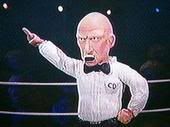Have you ever wondered why so many mixed martial artists study the blades of Kali? The Philippine blade sciences have one important fact. Kali practice in the beginning starts with rattan stick(s). Rattan, because it's lightweight and has a great deal of strength, so it makes for a fine tool to acclimate the eye to the speed of the weapon. Thus making your reaction time shorter, an essential aspect of all the science.
So it goes without saying, speed is an essential aspect of every practice in martial arts. And to say the least, Kali has gained momentum that's unparalleled in the weapon arts, perhaps for some other reason it got started because Bruce Lee made the practice, and his hands were extreme. Perhaps many people found it somewhat more realistic because the empty hand was never the way in real battle.
So it goes without saying, speed is an essential aspect of every practice in martial arts. And to say the least, Kali has gained momentum that's unparalleled in the weapon arts, perhaps for some other reason it got started because Bruce Lee made the practice, and his hands were extreme. Perhaps many people found it somewhat more realistic because the empty hand was never the way in real battle.

 I don't mean to imply anything at all but we always have room to grow.
I don't mean to imply anything at all but we always have room to grow.
Comment